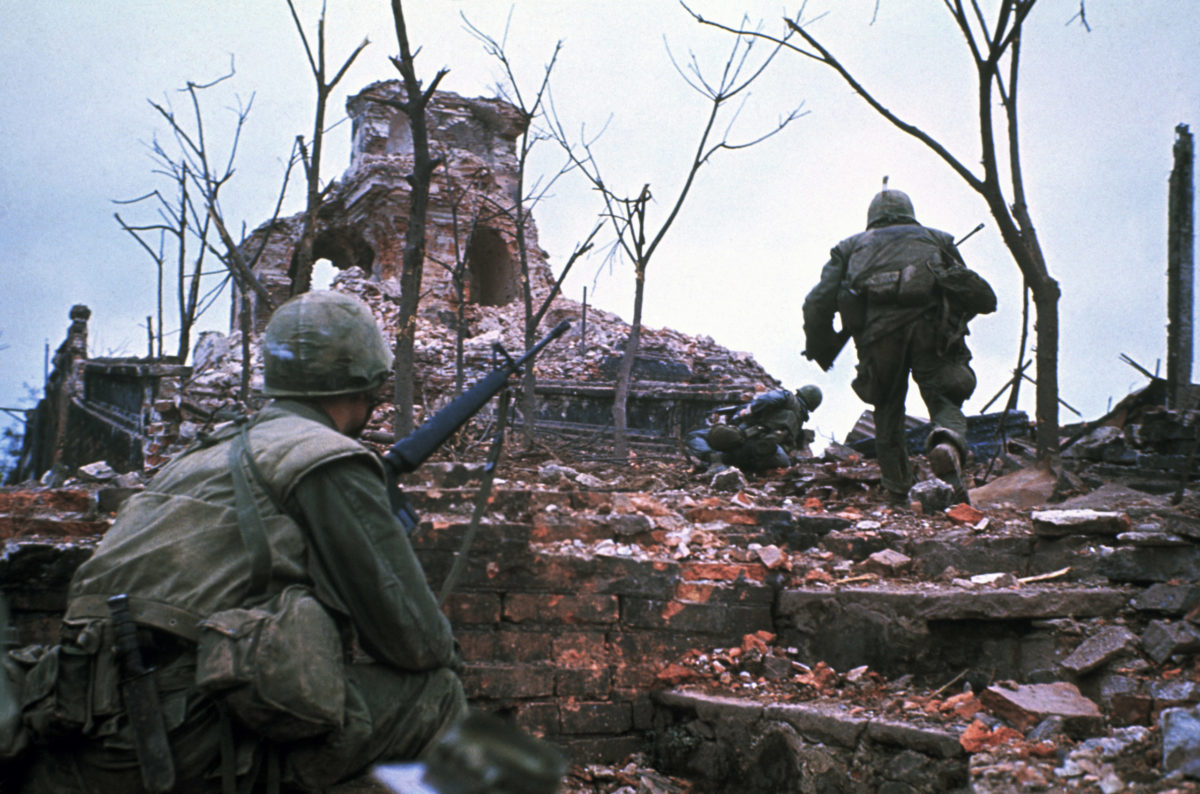With a population of 140,000, Hue was South Vietnam’s third-largest city and its traditional religious, cultural and intellectual center. Recognized as such by both the South Vietnamese government and its communist opponents, Hue seemed off-limits for the war until Jan. 31, 1968, when three North Vietnamese regiments, aided by Viet Cong infiltrators in the city, suddenly penetrated the defenses with the ambitious objective of establishing a provisional capital during the communists’ Tet Offensive.
Although the South Vietnamese made a serious error in moving most of their forces outside the city, enough troops remained in a corner of Hue to hold out. During the fighting, V.C. political officers roamed the streets seize nearly 3,000 government officials, soldiers, teachers, intellectuals, Catholics and selected foreigners — who would be found in mass graves after the battle. Meanwhile, two battalions of U.S. Marines comprising Task Force X-Ray were rushed to Hue to join the Army of the Republic of Vietnam’s 1st Division and South Vietnamese marines in fight to retake the city.
GET HISTORY’S GREATEST TALES—RIGHT IN YOUR INBOX
Subscribe to our HistoryNet Now! newsletter for the best of the past, delivered every Monday and Thursday.
What followed was one of the longest and bloodiest engagements of the Tet Offensive, described in impressive fashion by James H. Willbanks in “The Battle of Hue 1968: Fight for the Imperial City.” Willbanks was an infantry adviser assisting the Army of the Republic of Vietnam during the North Vietnamese invasion of 1972 and is currently professor emeritus of military history at the U.S. Army Command and General Staff College at Fort Leavenworth, Kansas. Instead of focusing almost exclusively on the U.S. Marines, he employs all the information he could compile to also trace the activities of the ARVN, South Vietnamese marines, North Vietnamese Army and V.C. as both sides adapted to the environment of urban warfare, which they were unaccustomed to. Maps, graphics and illustrations by Ramiro Bujiero complement the text.
As occurred throughout South Vietnam during the Tet Offensive, U.S. and South Vietnamese forces ultimately succeeded in driving the NVA out of their erstwhile southern capital with heavy casualties, handing the communists another tactical defeat. The ancient city lay in ruins, however, and thousands were dead. Besides the political mass murder, at least 1,200 died amid the maelstrom of house-to-house combat.
The very fact that the communists took the city and held it for 25 days added to the overall strategic and psychological victory that the Tet Offensive came to represent for the communists, summed up in CBS News anchor Walter Cronkite’s remark after witnessing the fight for Hue: “What the hell is going on? I thought we were winning the war.”
In a remarkable coda, however, Willbanks concludes with a chapter on the battle site today — still Vietnam’s cultural heart and almost completely restored as a popular tourist center.
historynet magazines
Our 9 best-selling history titles feature in-depth storytelling and iconic imagery to engage and inform on the people, the wars, and the events that shaped America and the world.


